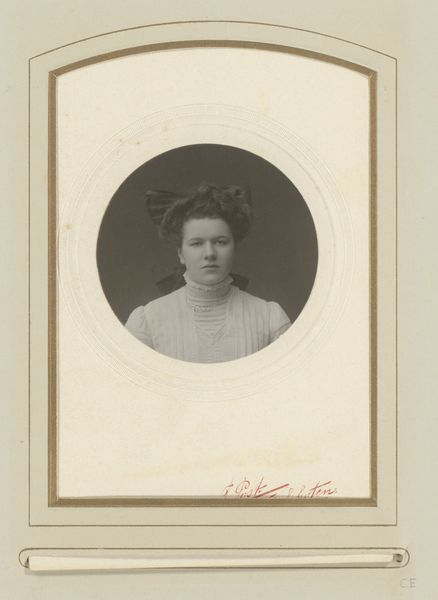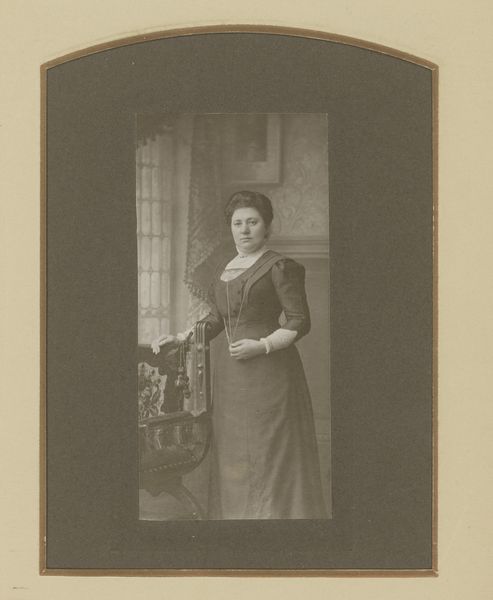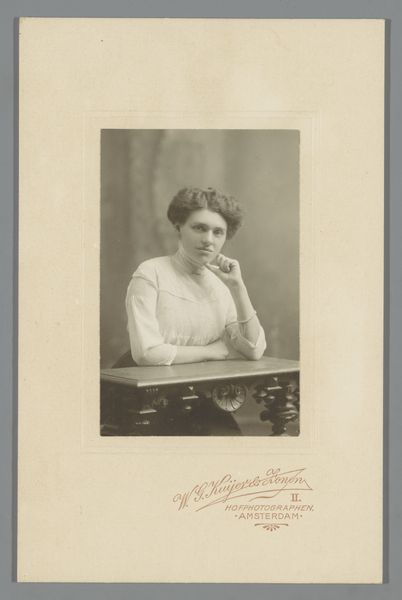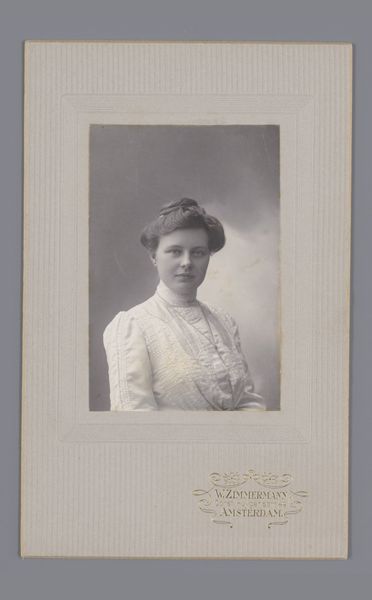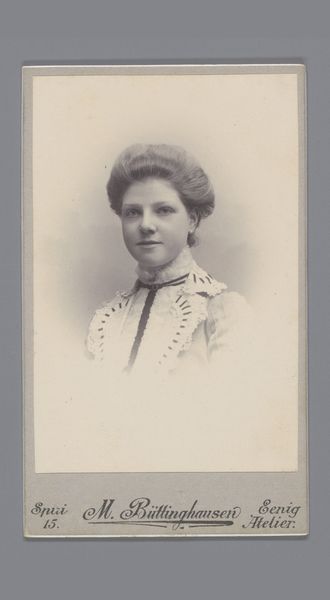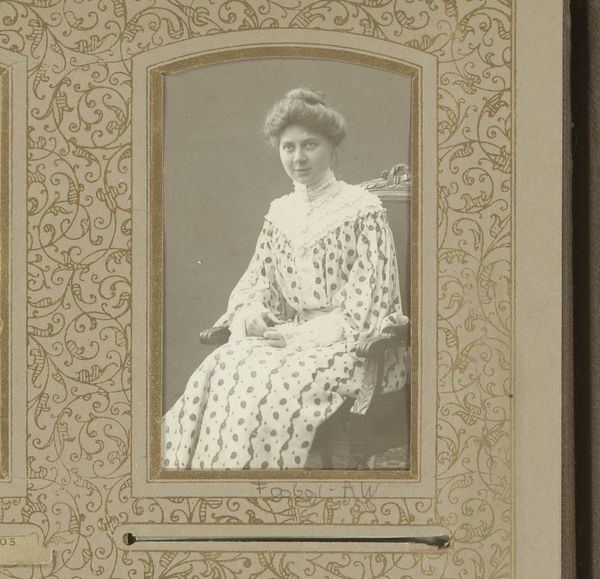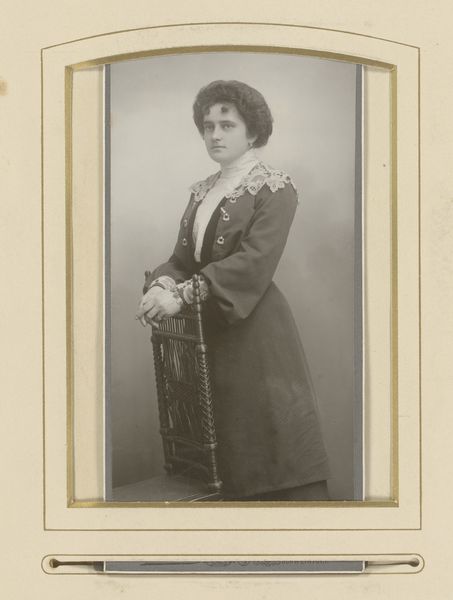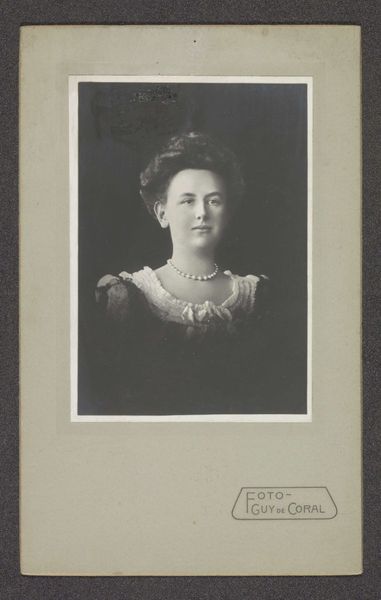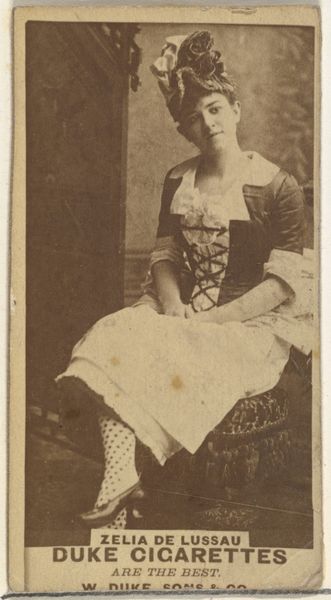
photography
#
portrait
#
photography
#
historical photography
Dimensions: height 135 mm, width 98 mm
Copyright: Rijks Museum: Open Domain
Editor: This photograph, "Portret van een vrouw op een stoel," or "Portrait of a Woman in a Chair," was taken by Stephanus Adrianus Schotel sometime between 1902 and 1920. It's striking how formally staged the image is. What can you tell me about the socio-historical context of this portrait? Curator: Well, photographic portraits like this one offer fascinating insights into the social structures of the early 20th century. Photography was becoming more accessible, but it was still a significant event to have one’s portrait taken. Consider how the woman is positioned. Her posture, the chair, and her attire indicate a certain social status or aspiration to one. How do you interpret the presence of "Atelier Schotel Arnhem" on the photograph? Editor: I imagine that shows the studio’s branding and lends prestige. It’s a mark of the commercial and social function of the work. Were these types of portraits about self-representation and perhaps a construction of identity within a rapidly changing society? Curator: Precisely! Portrait studios played a vital role. They provided a space where individuals could craft their public image, mirroring or perhaps even challenging existing social norms. Did everyone have access to this studio experience? What messages do you think are conveyed by making it “historical photography”? Editor: I guess studio portraits may not have been easily affordable, hinting at middle or upper-class status. Highlighting it as historical draws a distinction between casual present-day snapshots and a more formal past, imbuing the photo with nostalgia and a sense of bygone eras. Thinking about art’s social function, how did institutions help democratize this type of expression in the following decades? Curator: By showcasing a wider range of portrait subjects and photographers. It allowed diverse social classes and styles of personal image creation into public spaces, shaping and reshaping social views. Editor: I’m starting to see the political nature behind seemingly straightforward historical photography. The art world's influence on this area really shines through. Curator: Indeed, it shows the intricate dance between social expectations, individual expression, and institutional frameworks.
Comments
No comments
Be the first to comment and join the conversation on the ultimate creative platform.
